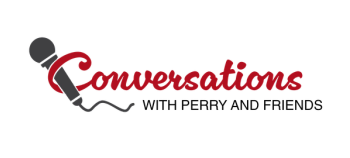
- MHE December 2021
- Volume 31
- Issue 12
It’s Steady as She Goes in Employer-Based Health Insurance
The COVID-19 pandemic has disrupted healthcare and many parts of the U.S. economy, but employer-based health insurance?
The COVID-19 pandemic has disrupted healthcare and many parts of the U.S. economy, but employer-based health insurance? Largely unruffled, according to results of the Kaiser Family Foundation’s annual survey of employer health benefits.
The average annual premium for single and family coverage increased by 4% from 2020 to 2021, the same percentage increase as the year before, according to the survey. Covered workers shouldered 17% of the premium for single coverage and 28% for family coverage, similar to the worker share in 2020. The steadiness of the increase does not negate how fast premiums have risen: According to Kaiser, the average premium for family coverage has gone up 22% since 2016, twice the rate of inflation during that period.
The proportion of employers who offered coverage (59%) and the proportion of employees who enrolled in plans offered by their employers (62%) also saw little change between 2020 and 2021.
The broad outlines of the survey may suggest the gelling of a status quo for employer-based health benefits, but that does not mean there haven’t been notable shifts and adjustments. For example, the Kaiser survey found that the proportion of large firms offering biometric screening — checks of cholesterol levels, blood pressure and body mass index — is decreasing, from 50% in 2020 to 38% in 2021.
Wellness programs have, not surprisingly, gone digital and remote. The survey respondents indicated that 21% of the programs added a digital offering in 2021 and 34% reported tweaking their programs to accommodate people working at home.
And, of course, telemedicine is ascendant. Nearly all (95%) of the employers with 50 or more employees offered telemedicine in 2021, which the Kaiser survey defined as telecommunications with a provider in a different location (email and web-based videos did not count). That’s up from 85% in 2020.
The survey also revealed an interesting swing to “level-funded” plans among small employers that are self-insured. As explained by the Kaiser researchers who conducted the survey, level-funded plans bundled self-funding with extensive stop-loss insurance. The companies that sell the coverage charge a monthly fee (as the Kaiser researchers point out, it resembles a premium) that includes a percentage of the expected cost of the provision of the healthcare benefits, a premium for stop-loss coverage and an administrative fee.
The plan administrator, often an insurer, can consider the health status of the workforce, so level-funding can be a good deal for companies with employees who are young and, on average, healthy. But level-funding, because it is a form of self-insurance, escapes state premium taxes and state-mandated benefits. The Kaiser researchers reported that the survey showed a steep increase in the share of small firms with level-funded plans, from 13% in 2020 to 42% in 2021.
The Kaiser survey was conducted from mid-January 2021 through July. Representatives of 1,686 firms filled out the survey. Kaiser researchers reported the findings in Health Affairs in November.
Articles in this issue
almost 4 years ago
Oral and Dental Health is Crucial. But Access to Coverage is Spotty.almost 4 years ago
Digital Therapeutics Shaping the Future of Carealmost 4 years ago
Health Insurance Markets Are Concentrated — and Getting More Soalmost 4 years ago
Is Cancer Screening Getting Back to Normal?almost 4 years ago
Value-Based Care in Oncology Gets off to Shaky Startalmost 4 years ago
NSCLC Therapy is Increasingly TargetedNewsletter
Get the latest industry news, event updates, and more from Managed healthcare Executive.






















































